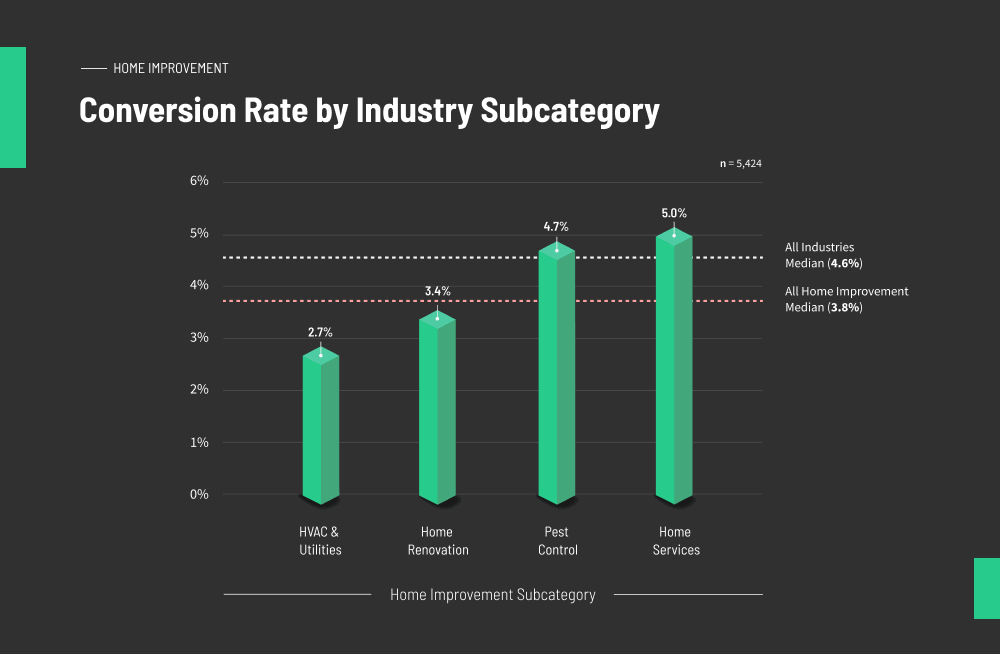How often do you reflect on the ways technology changes your life as a marketer?
I’m not talking full-on paradigm shifts here. (“We do our marketing… on the internet.”) I mean the sly, step-by-way manner in which new tech slides neatly into your existing stack and subtly reframes the game on you.
These changes don’t always alter your job in dramatic ways, but they eliminate the hassles and headaches. They may speed up your time to results, automate painful routines, and enable you to focus on what matters most. (Remember what collaborating on a document looked like ten years ago? Remember printed memos?)
Very rarely, these technologies also let you do things you’d never considered possible.
No incoming martech makes a better case for this sort of incremental innovation than artificial intelligence. While new AI products are surely on the horizon—self-driving cars are coming any day now, possibly, maybe—AI’s most dramatic effect on your job today lies in adding new features across the tools that you’re already using.
When you’re living it, of course, this type of change can be hard to notice. It’s like suddenly realizing you desperately need a haircut after three months in lockdown.
But, one day soon, you’ll marvel at all the things AI sneakily helped pull off your plate. Because when marketing meets AI, magic happens. It can feel inevitable—but that doesn’t mean you don’t need to pay attention.
At Unbounce, we not only believe that applied AI is the future of marketing, we also think marketers tuned in to what’s happening now stand to benefit in a big way in 2020 and beyond.
To put it another way, marketing and AI is a love story for the ages.

Marketing and AI: A “Meet Cute”
For marketers interested in learning what AI can do for them, right now, debates and philosophy about artificial intelligence can be heady stuff. And, honestly, it’s kind of a distraction. So, instead of getting into the weeds, let’s start with the distinction that makes the most sense for marketers to learn: the one between AGI and ANI.
Artificial General Intelligence (AGI)
Strong AI or Artificial General Intelligence (AGI) is what most people think of when someone says AI.
This technology replicates neural networks (not necessarily human ones) to perform highly sophisticated cognitive tasks. AI researchers typically take this one step further, though. According to them, AGI “controls itself autonomously, with its own thoughts, worries, feelings, strengths, weaknesses, and predispositions.”
Teams across the world are working on AGI, but the closest to a consensus from researchers is that we might see it sometime within our lifetime. And some skeptics doubt we’ll ever see AGI, let alone more advanced forms.
Artificial Narrow Intelligence (ANI)
So handing over your marketing campaigns—or, gulp, your job—to an AI is decades or centuries away. But weak AI or Artificial Narrow Intelligence (ANI), sometimes also called “applied” or “pragmatic” AI, is available to marketers today. Right now.
As the name suggests, ANI focuses on narrow problem-solving applications. In the world of marketing, this means taking on specific, repetitive tasks to deliver additional business value. It may learn and make decisions independent of your input, but mostly this AI tackles the work you’d rather not.
But here’s the thing: ANI might not challenge our fundamental conceptions in the same way AGI does, but it’s having a transformative impact on our lives (and jobs) nonetheless. It integrates so deeply into our everyday lives that we don’t have to think about it. Chances are good you’re already using ANI, whether you know it or not.
Don’t believe me? Let’s take a look at a few places you might be encountering ANI today, either as a consumer or as part of your job. I admit this list is not even close to comprehensive, but that’s my point: AI is slowly but surely filling all the cracks in our marketing stacks. (And, hey, that rhymes, so it must be true.)
Product Recommendation and Content Curation
Companies like Amazon and Netflix made fortunes by pointing people at more things they might want to buy. Much of these efforts are powered by sophisticated algorithms that let them match the right products and content with the right customer.
Amazon, for example, runs on a recommendation engine that’s been driving significant business value for more than 20 years. From the early days of user-based collaborative filtering (i.e., an algorithm making recommendations based on similarities between users) to more scalable solutions driven by a deep learning framework called DSSTNE.
DSSTNE is pronounced “destiny,” by the way—as in “buy this jewel-encrusted toilet brush… because it’s your destiny.” They’re not subtle.

Netflix doesn’t sell products, but they similarly credit the combination of contextually-aware recommendations and personalization (both powered by machine learning models) with saving them $1 billion a year.
How does this work? By reducing one-month churn by several percentage points. In the crucial 60 to 90 seconds that a customer will spend browsing before quitting the app in frustration, Netflix serves up content most likely to appeal to people with similar tastes. And it works: 80% of what people watch comes from a recommendation.

Say you’re not Amazon or Netflix, though. Say you’re part of a small team or a startup tight on resources. What can you do?
The good news is that today’s marketers can similarly take advantage of AI-powered recommendation engines on a more affordable scale.
Not only is some of this tech available to your developers, but more than one tool exists right now that lets you deliver product and content recommendations based on audiences, their intents, and their interests. Their availability will only increase in the months and years to come.
AI-Enhanced PPC Campaigns
Like Amazon and Netflix, Google will stick AI almost anywhere, even before its fully baked—from Gmail’s Smart Compose, which lets you email platitudes at lightning speed, to the AI-based noise-canceling feature recently added to Google Meet. Then there’s BERT and RankBrain’s role in search, and TensorFlow’s application to encryption, translation, robotics, and more… (The ellipsis is well-earned here.)
For digital marketers, one of the most significant use cases for machine learning has been in Google Ads. In a couple of years, Google’s Smart Bidding technology has gone from a curiosity that, at best, once ruffled a few feathers to something that has PPC experts rethinking how they’re spending their time.

According to Workshop Digital’s Andrew Miller, this sort of tech has overturned a lot of longstanding PPC best practices.

AI and machine learning are enabling PPC analysts to spend less time manually crunching data and more time on strategy development. Our jobs are not in danger yet, but machines are allowing us to rethink and recast our roles as AI-driven tools augment our capacities.
Andrew Miller, Co-Founder, Workshop Digital
Smart Bidding was once a neat trick that couldn’t hold a candle to an experienced human. Experts like Andrew tried it out, and many wrote it off. (Some still do.) But many PPC’ers point out that automated bidding is increasingly reducing the time spent on manual bid management.
Are agencies running for their lives because of AI-powered enhancements like Smart Bidding? Definitely not. But roles are changing as today’s PPC specialists spend more time on higher-level strategy and specialized growth tasks. For an industry that thrives on staying current, AI is a net positive.
Machine Learning and Conversion Rate Optimization
Roles are changing on the other end of the funnel too. When it comes to delivering more conversions from your landing pages, A/B testing is still very effective. But running tests also demands time, traffic, and expertise that marketers don’t always have. For small businesses especially, these minimum requirements put optimizing out of reach.
Enter artificial intelligence.
Around 2017, our R&D team realized machine learning has the potential to remove these hurdles from A/B testing—and free marketers to focus more on what humans do best. AI can even do things when testing that no human can do, making decisions on the fly about what version of a landing page is best for what type of visitor.

We kept thinking, ‘it isn’t the page that converts. It’s the visitor.’ So we started looking at how different visitors convert across different landing pages. The team built and tested machine learning models to see how far we could extend this concept. Sure enough, it turned out that we could drive higher conversion rates beyond what would ever be possible with a one-page-fits all system. We started prototyping immediately.
Yosem Reichert-Sweet, CTO, Unbounce
After three years of training a machine learning model, and investigating different ways to apply it, we arrived at Smart Traffic, a feature that fulfills this promise and makes AI-powered optimization available to Unbounce customers.
Smart Traffic uses a contextual bandit algorithm to learn about your visitors based on attributes like location, device, browser, and timezone. Once you’ve created and published a few variants of your landing page—the only thing it can’t do at this point, frankly—Smart Traffic delivers each visitor to the one most likely to convert.

There are two things that Smart Traffic shares with the best martech AI solutions today. First, our customers see results just by turning it on. (Nothing cuts through hype like actually getting stuff done.) And, second, it never stops learning, getting better at its task during the life of a campaign, and adapting to changes in traffic sources without human intervention.
Editor’s note. If you’d like to learn more about how Smart Traffic works, take a look at our announcement or read a few stories about marketers who’ve used it. Garrett’s also got you covered with some advice on how to build landing page variants that’ll take advantage of it.
AI-Augmented Chatbots
Chatbots are among the most common ways that your customers interact with AI. But even today’s strongest AI-powered chatbots are better at pulling relevant bits of data from specific contexts than they are detecting nuance. They’re humanlike, not human.
For business owners, however, this shouldn’t be a dealbreaker. Chatbots can be a lot more personable than asking your visitors to fill out a form, and interacting with them can foster engagement. They also let your customers self-serve, which saves everyone time.
I’ve always appreciated how Microsoft’s Purna Virji put it in an article for MarTech Today:
In one way, this is actually the future returning to the past. For years, internet users have sacrificed the personal touch for convenience. Now, we’re entering a world where we can have both. It’s the Personal Touch 2.0.
Purna Virji, Senior Manager, Global Engagement, Microsoft
Though fully custom chatbots are reserved for enterprise, small teams embrace the tech using solutions like Drift, MobileMonkey, Snatchbot, or even in Facebook Messenger. Juniper Research estimates that by 2023, retail chatbots will save the industry $11.5 billion in costs, and generate over $112 billion in revenue.

So, you’re unlikely to mistake a chatbot for another person long enough for true love to set in. But we shouldn’t define chatbots by the quirks and failures of today since they’re a rapidly developing technology. There’s a lot of promise in chatbots enhanced by natural language processing (NLP) and sentiment analysis. One day soon, you might just meet the chatbot of your dreams. (I’m not judging.)
AI-Generated Content
When content creators read about AI-generated content, they begin to sweat. Buzzy articles with titles like “Ten Ways AI is Going to Replace Your Content Team and Leave Them Bankrupt and Unloved”… Well, let’s just say they don’t exactly alleviate our imposter syndrome.
Michelle Halsey is ultimately skeptical, though, about the prospect of being replaced by a machine. She writes,

Talented writers have no need to worry about automation stealing their gigs. At least, not as long as our clients are more interested in engaging their audience than they are sucking up to search engines.
Michelle Halsey, Content Blogger and Copywriter
Note the emphasis on talent here. It’s much more likely that AI will first tackle templated and repetitive work that hardly calls for persuasive writing anyway. These days, applied AI can also smooth out the rough edges in your podcast, remove some of the pain from meticulously editing videos, and gut-check your sentences for clarity. Why not try a AI copywriting tool like Smart Copy for yourself? It’s not going to write in-depth thought leadership pieces for you, but it’ll make writing pesky short-form copy much easier.
Given the danger of AI-generated content flooding the net with misinformation and spun content, it’s also a use case we’re still grappling with. For now, AI appears to offer solutions to the very problems it creates, as developers teach tools like GROVER to generate “neural fake news” to detect it.

AI-Driven Data Insights
Every growth-minded marketer loves data. It’s an addiction. We bring it into every meeting and include it in every strategy session. We spend hours staring at spreadsheets, analytics, and reports, even if there’s way too much data to digest.
But even when you’ve got a hotline straight to your data team, recognizing patterns and pulling opportunities from massive swathes of data is hard. Artificial narrow intelligence helps with that too.
Recently, Unbounce explored the role that copy plays in landing page conversions through deep learning research, including a modified version of Google’s BERT (Bidirectional Encoder Representations from Transformers).
Our Conversion Benchmark Report crunched the data from 34 thousand landing pages. It delivers insights about how reading ease, word count, and emotional language relate to conversion rates across 16 industries.

The amount of data here (every word on every landing page) already put this analysis outside of human capability. But using machine learning allowed the team to dig deeper:

With data analysis and machine learning, we can take an unbiased look at what goes into a great landing page, and find opportunities for every landing page to improve. Machine learning allows us to look at significantly more data than a human being ever could, and find real, data-driven patterns that lead to higher conversion rates.
Tommy Levi, Director of Data Products, Unbounce
One question readers ask us about the report is why we included some niches (“pest control”) and not others (“model train enthusiasts”). The answer: the machine learning model generated these subcategories, on its own, from our aggregate data. Instead of imposing our arbitrary human bias, ML started with the data and sorted it from there.
Call me a nerd if you want, but that’s kinda mind-blowing. A lot of what’s happening in the Conversion Benchmark Report wouldn’t have been possible without pairing human intuition with the power of machines.
Want to see what our machine learning analysis revealed about your industry? Explore benchmarks and data-driven insights for 16 industries in Unbounce’s 2020 Conversion Benchmark Report.
AI Ain’t Perfect (and That’s Okay)
If you’ve ever tripped over a Roomba or struggled to get Siri to do, well, anything sensible, you know artificial intelligence has a long way to go. (If you’re feeling masochistic, try asking Siri how to contact Unbounce. I dare ya.)
But does that mean it’s just hype? Not. A. Chance.
By any measure, we’re still in the early days of the long romance between AI and marketing. We’ve yet to see its full potential. The transformations that marketing is undergoing now aren’t always so easy to recognize or understand. As we’ve seen, applied artificial intelligence already penetrates our jobs, our strategies, and our campaigns on almost every level.
You could just go with the flow, of course. Keep doin’ what you’re doing. Wait for AI to come to you and your stack. You’d be missing a trick, though.
Because by actively thinking about ways in which AI can enhance your marketing practice today, you’ve got the opportunity to get ahead of this thing. And by actively adopting it, you can start taking advantage of the freedom and new capabilities it delivers—before the competition gets there, as they inevitably will.

Why Unbounce Invested in AI for Your Landing Pages
Unbounce recently announced that we raised $52M (CDN) in funding to bring accessible AI-powered optimization to our customers. We’re investing now because we’re convinced using artificial intelligence to augment your marketing isn’t just aspirational, even for small businesses. It’s the future. This transformation is coming—really, it’s already here—and our customers will be a part of it.
The coming together of AI and marketing is tremendously valuable for businesses of all sizes. Whether it saves you time and money, highlights opportunities and patterns you didn’t know existed, or frees you to run slicker, higher-converting campaigns. As Rick Perreault, our co-founder and CEO, describes our ambition, the technology we’re developing today will eventually allow marketers to “set it and forget it through machine learning.”
In 2021 and beyond, AI insights will make it possible for you to create and optimize the highest-converting campaigns possible. Heck, in 2021 and beyond, AI just might rock the foundations of how you build, test, and optimize your landing pages. 🤘
Unbounce’s product teams are hard at work on these innovations, and we’re downright giddy with excitement about sharing progress and learnings with you here on the blog.
Watch this space. The story continues.

![[Unbounce – TOFU] Conversion Benchmark Report – V1](https://unbounce.com/photos/BLOG-CTA-OPTION-1-scaled.jpg)
